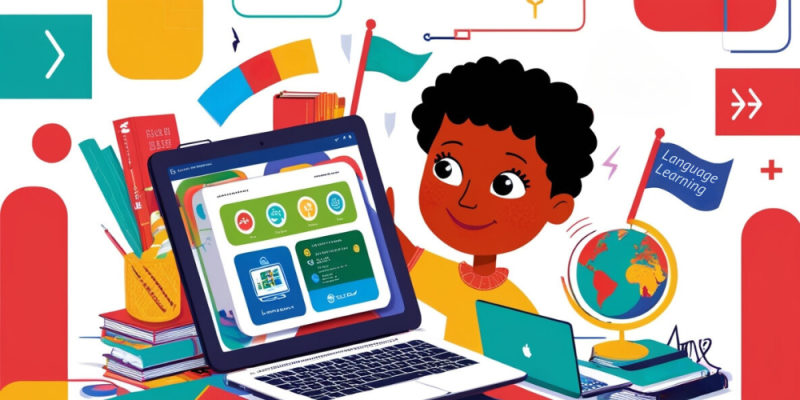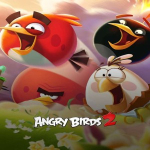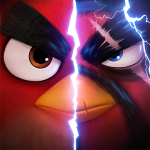Top 5 Language Learning Apps: A Fun & Flexible Approach
2024-12-17

Learning a new language can be a daunting task, but thanks to the modern world of apps, it has never been more accessible. Language learning apps provide a flexible and interactive way to practice vocabulary, grammar, and pronunciation. Some apps stand out with their user-friendly interface, engaging methods, and comprehensive learning paths. Let’s dive into five of the most popular and highly rated language-learning apps: Duolingo, Babbel, Busuu, Memrise, and Drops, breaking down their features, aesthetics, and unique functionalities.
Interactive and Fun: Duolingo’s Game-Like Approach
Duolingo is one of the most widely recognized language-learning apps, known for its playful approach to mastering languages. At the core of Duolingo’s success is its gamified learning system. The app motivates users through streaks, daily goals, and progress bars. Each lesson feels like a small challenge where learners are awarded experience points (XP), progressing through levels in a colorful and engaging environment.
Duolingo offers lessons in over 30 languages, including popular options like Spanish, French, and Japanese, as well as more niche ones like Welsh or Hawaiian. The lessons are split into small, digestible chunks, perfect for users with limited time.
In terms of functionality, Duolingo stands out for its simplicity and accessibility. The app guides you through bite-sized exercises that build from basic phrases to more complex sentences. For those just starting, it serves as a great introduction to vocabulary and basic conversational skills. However, it’s not ideal for users who want a deep dive into the nuances of grammar or language structure. While Duolingo offers excellent reinforcement of basic words and phrases, its free version is ad-supported, and the premium plan removes ads while adding additional features like offline learning.
Structured Learning: Babbel’s Professional Approach
Babbel takes a more structured and professional approach to language learning, focusing heavily on practical conversations and grammar. Unlike Duolingo, Babbel’s lessons are designed with adults in mind, presenting more in-depth language instruction. Each course is crafted by language experts, ensuring that users not only memorize vocabulary but also gain insights on how to effectively use it in practical, real-world scenarios.
Babbel offers lessons in 14 languages, including European favorites like French, German, and Italian. The app’s standout feature is its dialogue-based lessons, which immerse learners in realistic conversations. Babbel teaches grammar in context, which helps users to understand how language rules apply in day-to-day communication. Its voice recognition feature also enables users to practice pronunciation, making it a more interactive learning experience.
Though Babbel requires a paid subscription after the initial free trial, its pricing is reasonable given the depth of content. For users who are serious about achieving fluency or gaining a solid foundation in a language, Babbel’s carefully structured courses and emphasis on correct grammar make it an excellent choice.
Community and Collaboration: Busuu’s Social Learning Aspect
Busuu brings a unique social element to language learning by integrating a community of native speakers who help each other improve. The app provides an array of engaging and hands-on lessons in 12 languages, including Russian, Turkish, and Japanese. What makes Busuu stand out is its unique feature of allowing users to your written or spoken exercises corrected by native speakers within the app, creating an engaging two-way learning process.
The lessons in Busuu are structured around common topics and situations, like introducing yourself or asking for directions. This focus on functional language is beneficial for travelers or learners who want to quickly gain conversational skills. The app also includes grammar explanations, exercises, and a “Review” feature that ensures learners don’t forget previously learned vocabulary.
Busuu’s premium plan unlocks additional features like personalized study plans and offline access. Although Busuu offers fewer languages than some of its competitors, its community-driven approach to language learning adds a level of personalization and motivation that can’t be found in other apps.
Immersive Learning Through Visuals: Memrise’s Rich Content
Memrise is an excellent choice for learners who thrive on visual and interactive content. The app uses a variety of multimedia tools to teach vocabulary, grammar, and conversational phrases. With Memrise, users can access language courses in 16 languages, including Portuguese, Arabic, and Mandarin Chinese. The standout feature of Memrise is its use of videos featuring native speakers, which enhances users' ability to sharpen their listening and speaking skills in a more natural setting.
Memrise's learning process is divided into short sessions that encourage daily practice. Each lesson builds on the previous one, using mnemonic devices to aid memorization. In addition to vocabulary flashcards, Memrise includes quizzes and games that test the learner’s understanding of the material. The spaced repetition system ensures that users retain words over the long term by reviewing them at the optimal time.
The app’s free version includes basic lessons, while the premium version unlocks additional features like advanced grammar lessons and offline learning. Overall, Memrise’s use of visual learning and real-world videos makes it an engaging and effective tool for beginners and intermediate learners alike.
Minimalist Yet Powerful: Drops’ Visual and Vocabulary-Centric Design
Drops focuses on vocabulary acquisition with a minimalist and visually appealing design. Its core strength lies in teaching languages through illustrations and short, time-limited sessions that make learning quick and accessible. Drops offers courses in over 40 languages, including Icelandic, Maori, and Tagalog, making it one of the most diverse language learning apps available.
The app is ideal for those who want to build a strong vocabulary without diving into grammar-heavy lessons. Each lesson lasts five minutes, making it perfect for those with busy schedules or for learners who want to build up their knowledge gradually. The visual approach to language learning used by Drops ensures that users associate words with images, which can be especially helpful for retaining vocabulary.
Although Drops is focused on vocabulary rather than full language immersion, it can serve as a powerful supplement to other language learning methods. Users can unlock more features and language packs through a subscription, but even the free version provides a useful daily practice tool.
Which App Is Right for You?
Each of these apps has its own strengths and target audience. Duolingo’s fun and accessible design is perfect for beginners who want a game-like experience. Babbel offers a more serious and structured approach for learners looking to focus on grammar and real-world application. Busuu’s social learning aspect and native speaker feedback are great for those who thrive on collaboration, while Memrise's rich multimedia content is ideal for visual learners. Finally, Drops excels at teaching vocabulary through minimalist design and short, daily sessions.






